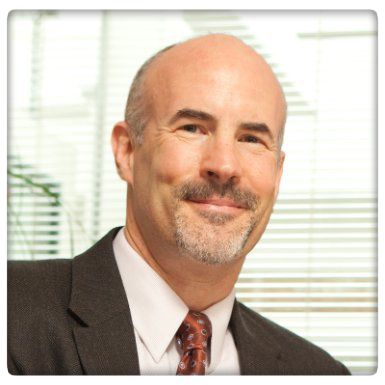 |
| Craig Collar CEO/General Manager Snohomish County Public Utility District |
The Snohomish County Public Utility District (SnoPUD) named Craig Collar as its new CEO/General Manager effective September 1, 2015. He’s not new to the utility – or to cleantech. In fact, he’s a big reason why SnoPUD enjoys a reputation for cleantech innovation. Collar spearheaded numerous research and renewable energy initiatives for the utility as Assistant General Manager of Power, Rates and Transmission Management.
Collar recently shared his immediate and long-term priorities as the new SnoPUD CEO/General Manager with the CleanTech Alliance. Below, he shares his immediate and long-term priorities, as well as thoughts on the EPA’s Clean Power Plan, cleantech trends and more.
Congratulations on becoming SnoPUD’s new CEO/GM. What are your priorities for the next 12-18 months?
I will be focused at the outset on continuing and completing important projects currently underway (i.e. two renewable hydropower projects and our energy storage program), and ensuring that the people working on them have what they need to succeed.
A major priority is the PUD’s “ONE” program, a multi-year initiative that creates a foundation for business process and technology improvements. The utility also has a number of distribution and engineering projects underway, both capital projects and the more usual work. These projects are essential to ensure we can continue to carry out our mission as a utility.
SnoPUD was one of the region’s first utilities to enact a climate policy. How do you blend your responsibility to rate payers with your responsibility to the planet and our environment?
SnoPUD approaches renewable energy projects in a way to assess their economic, environmental and technical viability in order to protect the interest of ratepayers. At the same time, we’re focused on meeting our own climate change policy and mandates.
Local, renewable energy projects use fuels that are free (i.e. wind, water, sun) and that reduce our dependence on fossil fuels. Once the construction costs are paid, these projects are some of the cheapest resources in our portfolio while also resulting in zero emissions.
The Clean Power Plan aims to reduce overall U.S. emissions by focusing on state-by-state reduction goals. Do you think the policy will be effective at reducing cumulative emissions?
While we are still reviewing the plan, we’re hopeful that the EPA has recognized regional differences and the unique nature of the Pacific Northwest, which has made great strides in developing clean renewable energy over many years.
SnoPUD, for example, has contracted for more than 200 MW of wind energy capacity, has constructed – or soon will construct – approximately 20 MW of small hydropower, purchases 2 MW of biomass/biogas, and is installing 4 MW of energy storage in 2015 and 2016 to better integrate renewable energy resources. It has helped customers with incentives and technical support to install more than 5 MW of solar energy capacity. The utility also has been a leader in the research of tidal and geothermal energy sources in the Pacific Northwest.
What will the specific impact of the Clean Power Plan be for Washington State?
Washington State is in the process of developing a plan that meets EPA’s guidelines to reduce greenhouse gas emissions from existing fossil fuel-fired electric generation. Fortunately, our state relies mostly on clean, renewable hydropower to meet our energy demands. We are well ahead of the curve, compared to the rest of the United States.
Washington State’s 2030 goal is 983 pounds per megawatt-hour, which is in the middle of the pack compared to other states.
SnoPUD has been a leader in renewable energy deployment for quite some time, sourcing 97% of your electricity generation from renewable sources. Will the Clean Power Plan help other utilities catch up – or hurt those of you already so far ahead?
We would encourage the state to develop a Clean Power Plan that recognizes the hard work and investments utilities and their ratepayers have already made to develop renewable energy resources. No credit for past actions will disincentive companies willing to take the first steps.
What emerging technologies and trends are you tracking? Are there any that SnoPUD is looking to deploy in the coming years?
The PUD continues to implement innovative energy storage projects at Everett area substations. The projects, including both lithium-ion and vanadium flow batteries, aim to help standardize the storage market and make it more economically and operationally viable for the energy industry, while also providing better integration of renewable resources and energy load management.
Another area of focus is the development of low-impact hydroelectric projects in Western Washington. The PUD will soon begin construction at two sites above Snoqualmie Falls at Hancock and Calligan creeks. These local projects will provide low-cost, carbon-free energy at times of the year when it’s needed the most and minimize our exposure to market purchases, which are often fossil fuel based sources.
As the new CEO/GM, you’re responsible for keeping the lights on for 332,000 electric customers in a territory spanning 2,200 square miles. That probably comes with a fair amount of stress. What keeps you up at night?
We truly have great folks working here at Snohomish, not only extremely competent, but also with a deep sense of purpose in terms of ensuring that we fulfill our mission on behalf of our ratepayers – many of whom are, of course, our employees, our families, neighbors, and friends. As long as I focus on ensuring that we are taking care of our people, our processes, and our infrastructure; I’ll sleep well knowing that our teams are fully prepared to be successful no matter what challenges come our way.